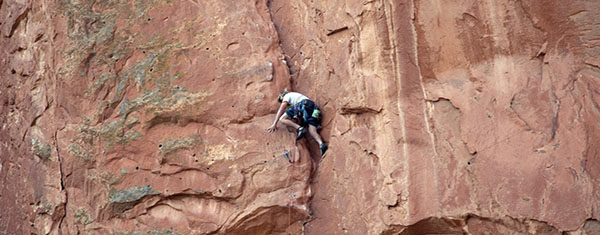For many Coloradans the outdoors is as much a part of our lives as our 9-to-5s. But what happens if your escape from the “real world” becomes a source of stress or trauma?
We’ve all heard about sexual harassment in the business, entertainment, news, and political fields. As an investigator and lawyer, I’m particularly plugged into developments and issues about harassment in the workplace. In my spare time I’m also an avid rock climber. The climbing community, like any other, is not immune from sexual harassment and sexual assault.
Recently, a team of researchers and organizations kicked off an initiative to study and address sexual harassment in the climbing world. The researchers publicized a short survey to members of the climbing community. More than 5,300 people from over 60 countries responded to the survey. Approximately 70% of respondents were from the U.S. and were divided nearly 50-50 between men and women.
Perhaps the biggest finding from the survey was that approximately 47% of women and 16% of men reported that they had experienced some form behavior classified as sexual harassment or sexual assault while in a climbing setting. The types of behavior ranged from catcalling and unwanted verbal sexual advances to unwanted touching, forcible kissing, and rape.
These numbers are consistent with nationwide statistics reported elsewhere. For example, the CDC estimates that about 44% of women in the U.S. have experienced unwanted sexual harassment or sexual assault, and the EEOC has found that anywhere between 25% to 85% of women report having experienced sex-based harassment at work. As the researchers behind the survey stated, “Climbing looks a lot like society.”
Now that the data show that the climbing community is not immune from sexual harassment and sexual assault, the million-dollar question is what can we do about it? Especially in a community where its members come from all walks of life, there are no employee handbooks, no human resources department, and no disciplinary body or authority…
To help answer this question, the researchers—with the support of a coalition of climbing organizations, publications, retailers, and manufacturers—developed the #SafeOutside initiative. The goals of #SafeOutside are to identify and implement strategies to reduce incidents of sexual harassment and sexual assault, increase understanding, and provide a better support system for all climbers.
To these ends, the #SafeOutside campaign created a free toolkit to help organizations and individuals combat sexual harassment and assault. The current toolkit contains a number of resources, including best practices for policy and procedures, as well as educational materials, such as bystander intervention.
I am glad to see that the community that I hold dear has taken the initiative to confront these unaddressed issues and help make the sport safe and inviting. Although the #SafeOutside campaign originated in the climbing world, the tools and resources it offers to address sexual harassment are universal. They can be applied to any outdoors pursuit, social organization, community activity, workplace, and in our everyday lives.
As outdoor-loving Coloradans, let’s make the crags, the slopes, the trails, and the rest of our natural resources #SafeOutside for everyone.

